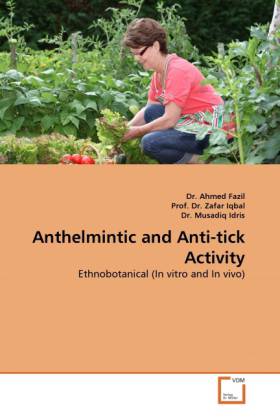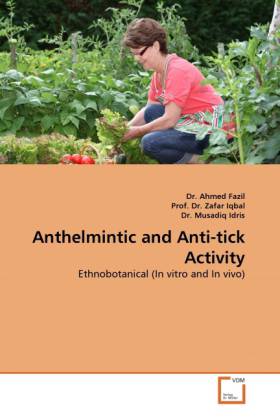
- Afhalen na 1 uur in een winkel met voorraad
- Gratis thuislevering in België vanaf € 30
- Ruim aanbod met 7 miljoen producten
- Afhalen na 1 uur in een winkel met voorraad
- Gratis thuislevering in België vanaf € 30
- Ruim aanbod met 7 miljoen producten
Zoeken
Anthelmintic and Anti-Tick Activity
Ethnobotanical (In vitro and In vivo)
Ahmed Fazil, Zafar Iqbal, Musadiq Idris
Paperback | Engels
€ 48,45
+ 96 punten
Omschrijving
Ethnobotany starts in the 20th century, the field of ethnobotany experienced a shift from the raw compilation of data to a greater methodological and conceptual reorientation. This is also the beginning of academic ethnobotany. The so called "father" of this discipline is Richard Evans Schultes even though he did not actually coin the term "Ethnobotany". Today the field of ethnobotany requires a variety of skills: botanical training for the identification and preservation of plant specimens; anthropological training to understand the cultural concepts around the perception of plants; linguistic training, at least enough to transcribe local terms and understand native morphology, syntax, and semantics. Therefore, the Present work was done to characterize the anthelmentic and antitick activity of some ethnobotnaicals.
Specificaties
Betrokkenen
- Auteur(s):
- Uitgeverij:
Inhoud
- Aantal bladzijden:
- 100
- Taal:
- Engels
Eigenschappen
- Productcode (EAN):
- 9783639375008
- Verschijningsdatum:
- 19/08/2011
- Uitvoering:
- Paperback
- Formaat:
- Trade paperback (VS)
- Afmetingen:
- 152 mm x 229 mm
- Gewicht:
- 158 g

Alleen bij Standaard Boekhandel
+ 96 punten op je klantenkaart van Standaard Boekhandel
Beoordelingen
We publiceren alleen reviews die voldoen aan de voorwaarden voor reviews. Bekijk onze voorwaarden voor reviews.











